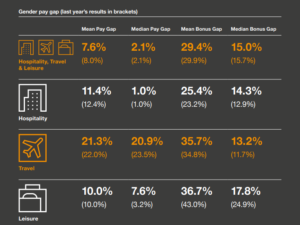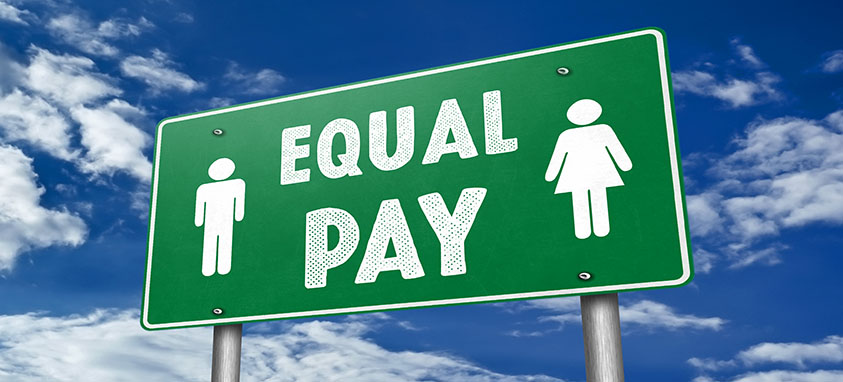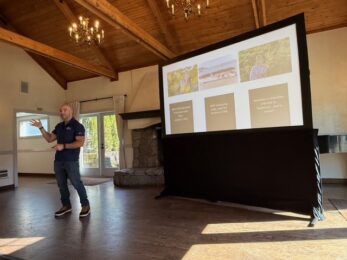Despite efforts to close the gender pay gap, a recent survey suggests that if it continues decreasing at its current rate, it will still take about 20 years before pay equality is reached.
The WiH2020 (women in hospitality) survey found that there has been a 0.4 percent annual decrease in the pay gap across hospitality, travel and leisure (HTL). The survey was created in collaboration with PwC, WiH2020 and UKHospitality. These three groups emphasize that promoting diversity and inclusion is pivotal, and work to make sure they have an impact on their communities.
Now in its second year of reporting, the WiH2020 survey has shown marginal overall improvement to the gender pay gap in the HTL sector. Results show that 10,442 companies disclosed their 2018-2019 figures, 9,352 companies have made their second disclosure and 742 of the companies are in the HTL sector.
The survey found that men still hold most of the top jobs. There are far more men in higher paying, senior positions and technical roles and more women in lower paid, unskilled jobs in HTL, such as housekeeping, that have a high turnover rate and insecure seasonal work.
More: How Four Wise Women are Leading the Way in Hospitality

Last year, the mean pay gap between men and women in HTL—which considers all data, with equal weighting, including outliers—was 8 percent. This year, it has dropped to 7.6 percent. Although not very significant, it is still lower than the overall mean pay gap, which stands at 13.1 percent. In hospitality the mean pay gap has dropped to 11.4 percent, travel has decreased to 21.3 percent and leisure has stayed constant at 10 percent.
Raising the Bar
“Being transparent about our data was a positive move for us. It was the catalyst for change and triggered a very open and productive conversation about the actions we were taking and what actions we needed to take,” said Nikki Humphrey, senior vice president for People of Virgin Atlantic.
The pressure is on to show year-on-year improvements and that promises are being met, as most survey participants see gender pay reporting as a three- to five-year journey. Additionally, ethnicity pay gap reporting will soon become mandatory to further highlight the lack of diversity within high-paying positions.
What’s Been Done?
Gender pay-gap reporting is one of the things being done to close the gap, and now that systems are up and running and payroll systems are aligned with reporting, it is easier for companies to comply.
Reviewing gender balance within teams, introducing unconscious bias training, setting up gender pay forums and implementing flexible working polices are some ways HTL companies are working to close the gender gap.
In a press release on Sept. 6, 2018, Caesars Entertainment reported that 99 percent of women at the company’s corporate headquarters and 98 percent of women working in nonunion roles at the company’s domestic properties had “no meaningful differences in average pay when compared to men in the same positions.” These results were released as part of its “Gender Equity Initiative,” which was launched in 2017 in collaboration with Billie Jean King and the Billie Jean King Leadership Initiative.
More: How Five Women are Leading the Way in Hospitality
Caesars Entertainment has pledged to review pay equity on a regular basis, reflecting its commitment to ensure equity for all employees and progressing toward its goal of 100 percent pay equity across all sectors.
What is Needed and What Can We Do Now?
There are still limited options available for women in HTL, and many take lower paying jobs to allow for greater flexibility in working hours, which leaves little room for career progression.
Diversity and inclusion are also needed as strategic priorities to close the gender pay gap. According to Wi2020 Review, diverse and inclusive businesses are gaining in motivation, innovation, talent appeal and customer reputation. However, leadership within each business must reflect the diverse make-up of the staff and customers; without this, businesses are likely to miss out on vital employee and customer understanding, causing their performance to suffer.
Looking into the Future
There are six key foundations outlined in the survey for how to continue to facilitate effective change.
- Alignment with business strategy: Promoting diversity and inclusion should articulate how to support specific business priorities such as strengthening customer satisfaction and attracting hard-to-secure talent.
- Clear direction ownership and tone from the top: Executive teams set the tone for the business, and ensure that diversity and inclusion are recognized as priorities. This needs to be more than a statement of intent. It can be supported by turning diversity and inclusion metrics into individual performance objectives and incentives as part of a business-wide accountability framework.
- Set realistic objectives: It’s important to identify top-priority diversity and inclusion objectives that address a business’s shortcomings. Strengthening the well-being of your workforce, changing attitudes about mental health, improving the experience of women, and increasing the representation of people from minority groups in senior and technical positions are some objectives to consider.
- Turn objectives into an action plan for delivery: Top priority objectives set the direction and help shape values within a business. It’s important to translate these objectives into an action plan that establishes measurable goals and how they’ll be achieved.
- What gets measured gets done: Data, analytics and tracking to gauge progress as well as targeting intervention and driving accountability will help support the action plan—because what gets measured gets done.
- Tell it how it is: Instead of just promoting initiatives and strengths, reporting should also focus on plans for addressing a business’s shortcomings and communicating progress over time. Acknowledging deficiencies can create opportunities by setting out plans for accelerating progress.





